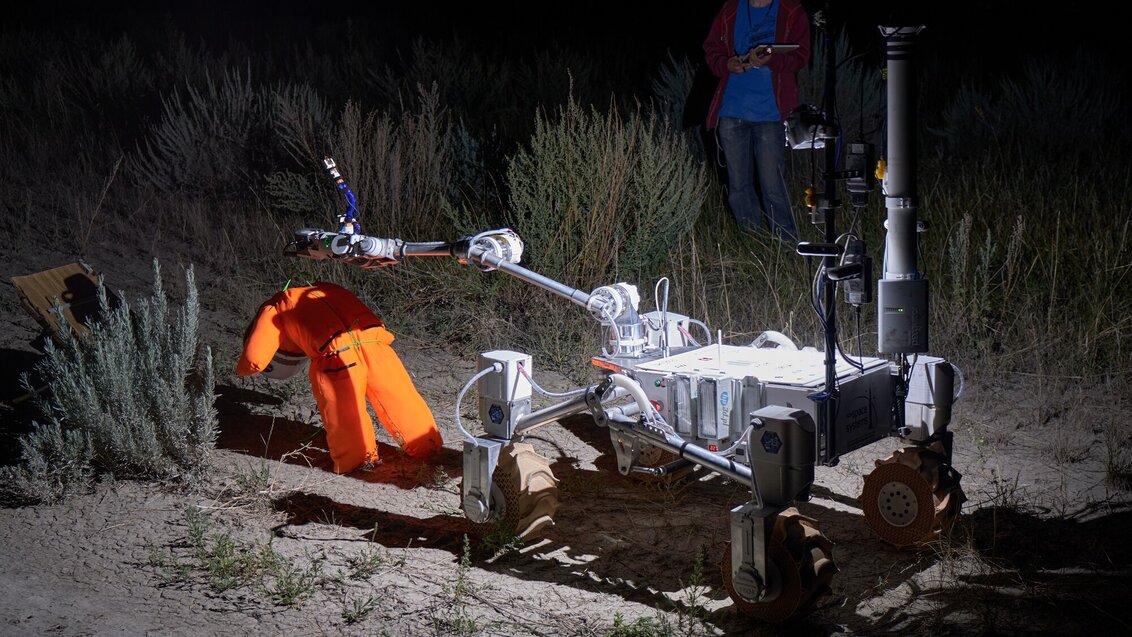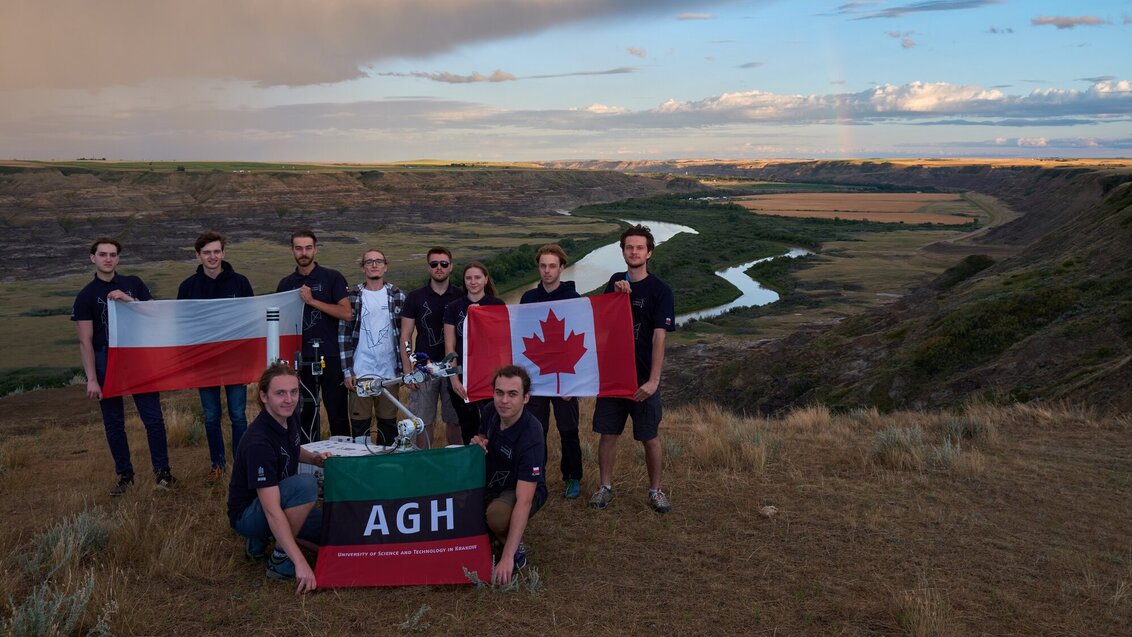The AGH Space Systems team participated in the Canadian International Rover Challenge for the very first time… and knocked out all the opponents! The AGH University students turned out to be the best in 4 out of 5 tasks, and in one of them (Water Redirection), they were close to perfection, as they received 148 points out of 150. Ultimately, they finished first with the result of 394.46 of 550 points.
Participants in the Canadian International Rover Challenge 2023 had to tackle missions that differed greatly from those encountered during other similar competitions. These were simulations of tasks that future residents of extraterrestrial colonies could be faced with.
- Search & Rescue
The mission was to safely bring a technician back to base and to repair and restart
a reactor after a failure. The task was carried out at night, so the rover had to be prepared to navigate in the dark and detect objects using infrared. - Water Redirection
The rover’s task was to disconnect the existing pipeline and assembly a new one to the water’s next destination. This mission was divided into two stages and lasted for 2 hours. - Traversal+
Following a disastrous reactor explosion, the rover had to traverse through the wreckage and identify valuable supplies to use in rebuilding the base. The task could be performed autonomously or manually, however, the most important were the ability to adapt and quick decision-making. - Land Speculation & Prospecting
Following a reactor failure, the decision was made to establish secondary outposts away from the main base. The team had to dispatch their rover to a possible site to carry out exploration and surveying work. Subsequently, based on the rover’s work, students had to deliver a report on their findings and recommendations on the construction site of a new complex. - Arm Dexterity
A new settlement needed a reliable power source, however, before new components arrived, a remotely piloted rover had had a task to use some spares and parts of the old power source to configure a new system and ensure power flow.
photo by Jakub Kopeć

photo by Jakub Kopeć


 Projects by AGH University Main Library with funding from Scientific Social Responsibility programme
Projects by AGH University Main Library with funding from Scientific Social Responsibility programme  On energy transformation and more. Distributed Energy Congress
On energy transformation and more. Distributed Energy Congress  Polish natural hydrogen initiative. AGH University concludes an agreement
Polish natural hydrogen initiative. AGH University concludes an agreement  Honouring those we lost this year
Honouring those we lost this year  AGH Solar Boat the best in Sardinian competition
AGH Solar Boat the best in Sardinian competition  AGH University Alumni Day 2024
AGH University Alumni Day 2024  AGH University to establish AI Factory
AGH University to establish AI Factory 

